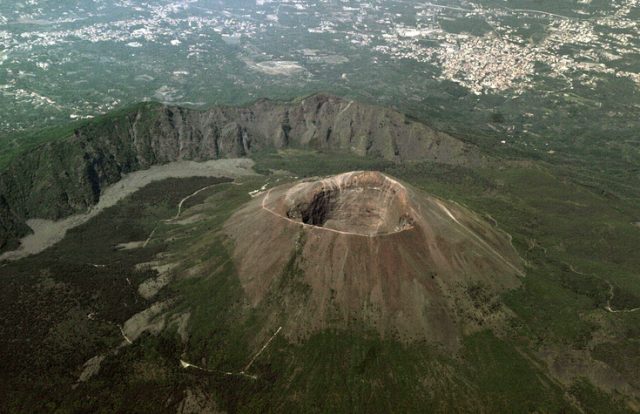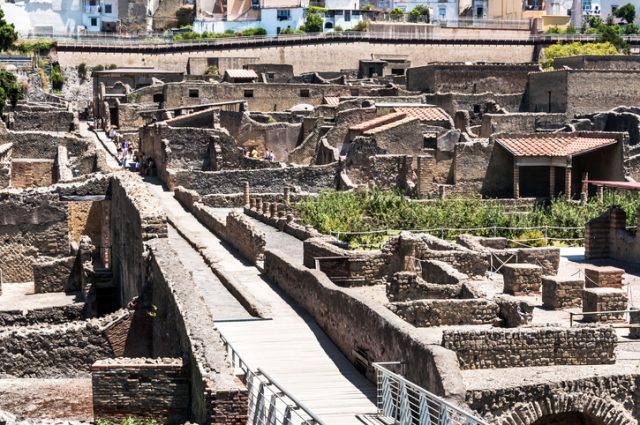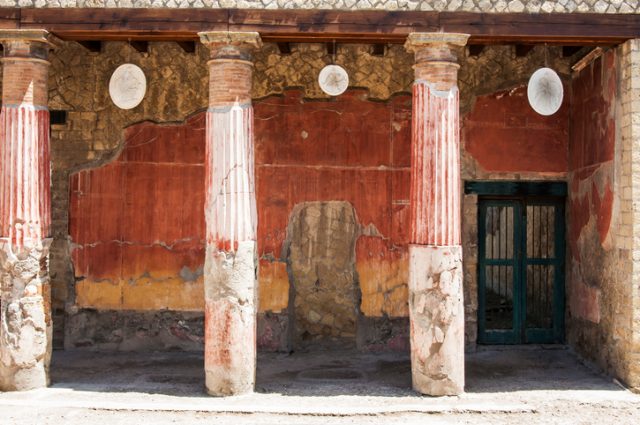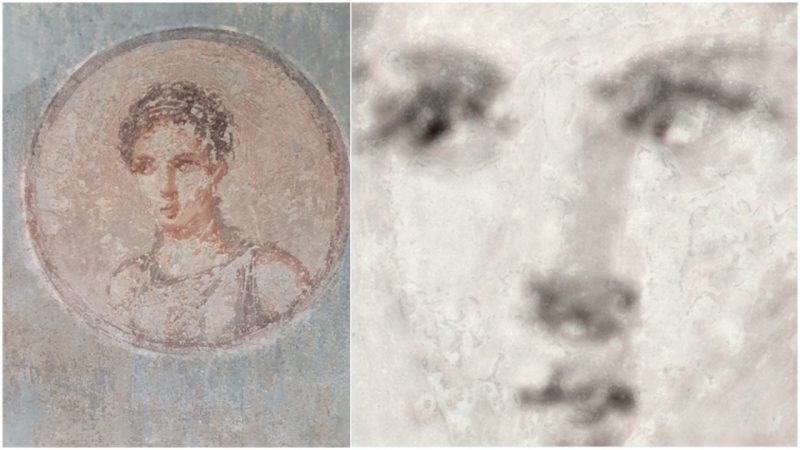X-rays have allowed us to look at many wondrous things, but can they bring an ancient city back to life?
They can if it’s the city’s artwork.
In 79 A.D. the eruption of Mount Vesuvius near Naples destroyed Pompeii and its lesser-known neighbor, Herculaneum. The cities and their civilizations were lost under the deluge of mud, molten rock, and volcanic ash.
When early researchers began uncovering Herculaneum in the 19th century, they found a treasure trove of mosaics and paintings preserved under that blanket. The problem was, the volcanic blanket had protective properties and once removed, the frescoes were exposed to weather and, even worse, air pollution. Decades of deterioration followed.

Now modern-day technology–the macro X-ray fluorescence instrument–is helping restore some of that ancient art. Researchers working in one of Herculaneum’s most art-rich locales, the House of the Mosaic Atrium, are using the portable instrument placed in close proximity to works of art to virtually peel back layers of contaminants and help reconstruct and even restore paintings.
The instrument helps map elements like iron and copper without doing damage. One analysis revealed the artist had sketched a young woman using an iron-based pigment. Highlights around her eyes had been done using a lead-based paint. Potassium signaled that her flesh was painted using an earth-based pigment.
By establishing the chemical elements in the painting, conservators can more safely choose cleaning solvents and stabilizers. And while they typically don’t paint over what remains, they can use what they learn to digitally re-create a work.
The art of Herculaneum is not the first use of the technique, but it is the first use in the original setting of the paintings. In carefully controlled museum settings, the instrument has been used to analyze work by Picasso, Van Gogh, and the Dutch masters.
As for the original settings in the shadow of Vesuvius, much has been recorded about Pompeii, where volcanic material formed eerie molds around people who perished there. Relatively few human remains were found at Herculaneum.
Another key difference between Pompeii and Herculaneum is the compact mass of material that buried the latter city under more than 50 feet of crust; it made excavation difficult, preserving Herculaneum and staving off looting.

Even more significantly, special ground moisture conditions preserved wooden frameworks of houses, wooden furniture, the hull of a boat, fabric–and even food. Extra toasty loaves of bread remained preserved in Herculaneum’s ancient ovens.
Out of sight is often out of mind in ancient history, so over the years, the modern city Ercolano was built over the forgotten Herculaneum. And for many years, the latter-day residents had no idea of the treasures buried deep beneath their feet.
It wasn’t until well diggers struck an underground wall in 1709 that Herculaneum was rediscovered. Tunnels were dug and treasure seekers did appear at that point, removing artifacts related to an ancient theater. Other excavations were undertaken, but when military engineer Karl Weber took over from 1750 to 1764, careful diagrams of the ruins were made, and artifacts were well documented. Weber logged an entire library of papyrus documents, recorded bronze and marble statues, and impressive paintings.

His work is considered among the earliest examples of what evolved into archaeology. The archaeology continued on and off under different oversight, but began in earnest again in 1927 with funding from Italy.
The work has also brought insight into the architecture and lifestyles of the ancient city of around 5,000 residents. The houses of nobles overlook the water, but the homes of middle class are interspersed nearby.
Public monuments uncovered include sports grounds, a large central swimming pool, and public baths.
In 1997, Pompeii, Herculaneum, and their sister, Torre Annunziata, which was also destroyed, were named UNESCO World Heritage Sites for their cultural importance. As such, they are protected by international treaty.
Terri Likens‘ byline has appeared in newspapers around the world through The Associated Press. She has also done work for ABCNews, the BBC, and magazines that include High Country News, American Profile, and Plateau Journal. She lives just east of Nashville, Tenn.
